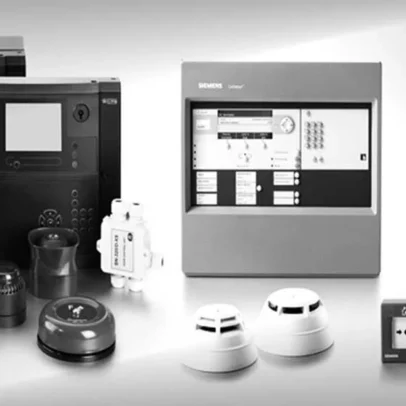| Specification |
Details |
| Detection Method |
Linear Heat Sensing (LHS) |
| Cable Length |
Can exceed 1 km |
| Installation Type |
Fixed / Flexible deployment |
| Controller Complexity |
Low |
| Fire Location Detection |
Available (distance-based) |
| Output Signal |
4-20mA (optional) |
| Compatibility |
Works with most fire panels |
| Applications |
Building fire alarms, Industrial plants, Tunnels, Conveyor belts, Mobile machinery |
| Response Time |
Up to 30 seconds |
| Compact Design |
Small and space-efficient |
This LHS Cable Fire Detection System by Hanumaa Protek is an efficient, low-maintenance solution for large-scale fire detection, ensuring safety and reliability in diverse applications.
Hanumaa Protek’s LHS Cable Fire Detection system is an advanced fire detection solution using Linear Heat Sensing (LHS) cables. This system detects fire along the length of the cable, making it ideal for protecting vast areas where traditional fire detectors may not be feasible.
The LHS Cable can be deployed across building fire alarm systems, industrial plants, tunnels, conveyor belts, and mobile machinery, offering seamless fire detection with minimal installation effort. Unlike conventional spot-type detectors, LHS cables identify heat build-up anywhere along their length, ensuring faster response in fire-prone environments.
The system features low controller complexity, making it easier to integrate with standard fire panels. It can also be equipped with distance location capability, pinpointing the exact point of fire detection and offering 4-20mA output for real-time monitoring.
There are limited states the LHD cable can be in:
- Open-circuit – Effectively an infinite resistance
- Normal Operating Condition – Apparent resistance will be the same as the
end-of-line resistor
- Fire Detection – Resistance of the Linear Heat Cable to the short circuit.
The linear heat detectors shall sense an overheat condition at any point along its
length and pinpoint its location. The heat detection system shall comprise a heat
sensing cable and a monitoring /control unit.
A change in temperature along the sensing cable shall cause a relative change in
resistance of the cable. This change shall be detected by the monitoring /control unit
which shall signal an alarm at the pre set temperature.
The sensing cable may be multicore or coaxial. One end shall be connected to the
monitoring unit. The other end shall be terminated so as to create a loop which shall
be continuously monitored for open and short circuit fault, and alarm condition.
Selection Criteria for Linear Heat Detector
Following are some minimum requirement applicable for linear heat detector,
however requirements vary from industry to industry.
The outer jacket shall be made of material that resists corrosion, chemicals, moisture
etc.
- The linear heat detector cable and monitoring system shall be suitable for operation
on a nominal 24V DC supply.
- The alarm condition shall be latched at the control unit, with reset facility from the
Fire and Gas panel, and locally on the control unit.
- The unit shall provide outputs for fault and alarm conditions that are compatible with
the main Fire and Gas panel.
- Sensing cable and any termination units required shall be certified for use as part of
an IS circuit when installed in hazardous area.
- Sensing cable and any termination units required shall be certified for use as part of
an IS circuit when installed in hazardous area.




Reviews
There are no reviews yet.